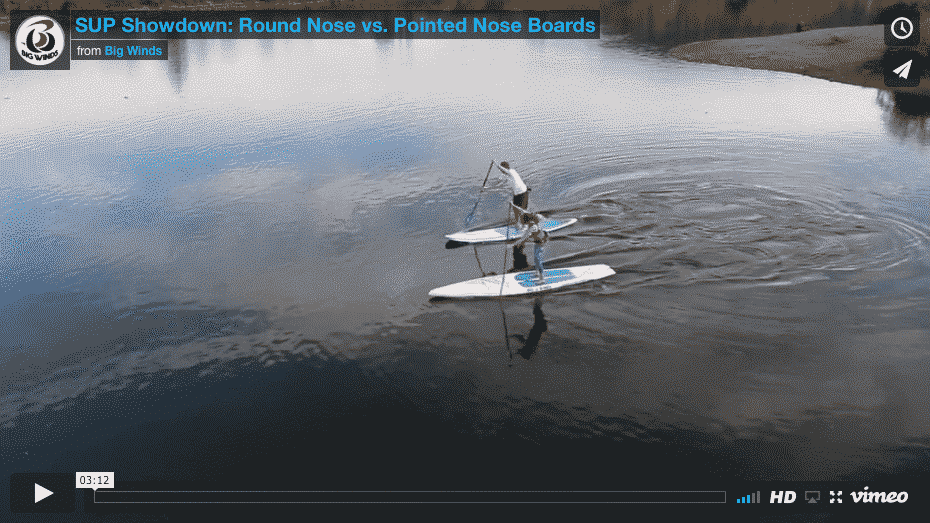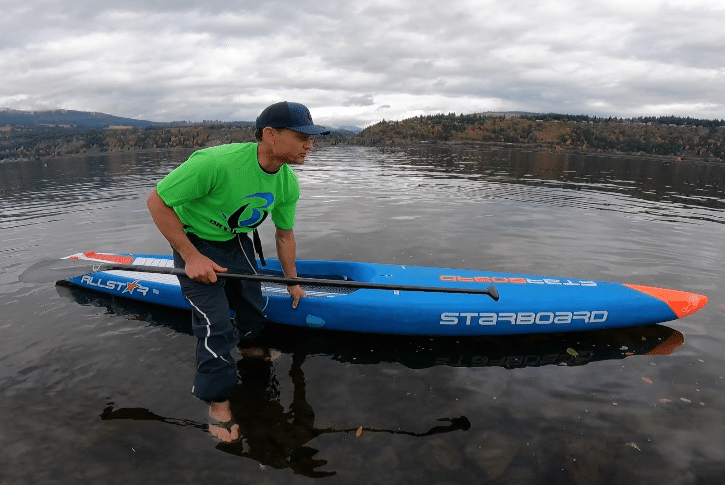Why Your First SUP is Not What You Think

True Story: Two of ‘em are round nose models. The third is a pointed nose touring board. Flash forward two weeks and the family is hooked. Everyone loves paddle boarding. The catch? Every family member is fighting over the pointed-nose touring board.
Google “beginner paddle boards” and thousands of round-nose SUPs appear. Yet here at Big Winds, we don’t necessarily recommend round-nose boards to newcomers. That is, unless a paddler plans to ride ocean waves, or have kids join them on board. If SUP surfing and kid co-paddlers aren’t main goals, we steer first timers, novice, and virtually all flat-water riders to the pointed-nose models here.
Our reasoning stems from a decade of selling SUPs, overseeing North America’s largest demo fleet, our vast SUP school, as well as youth paddling teams. Your best paddle board? Chances are, it’s not a round-nose model. Here’s why.
Compared to a round nose board, a pointed nose board will …
Be Just as Stable
The touring boards we offer are often as wide as their round-nose rivals, with just as much buoyancy for a rock-solid standing area to keep you upright. Pointed nose boards also boast higher average speeds than round-nose models, especially in chop. SUPs are like bicycles: more stable at speed. Higher average speeds enhance rider stability.
Glide, Glide, Glide
A pointed-nose board will glide farther per stroke than a round nose board of equal size, creating greater sensations of efficiency and reward. With little loss of momentum from one stroke to the next, paddling simply feels good. Riders paddle farther, happier, and – as we’ve discovered – more often.
On round-nose boards, however, gliding sensations are muted. There’s a greater sense of plowing through the water as the board lurches forward and settles, accelerating and decelerating from one paddle stroke to the next. Riders exert more effort for less reward. As paddling enjoyment suffers, so does the desire to keep paddling.
Track Better
Tracking refers to a board’s natural ability to go straight. Pointed nose boards track better, minimizing how often a rider must switch paddle strokes from one side of the board to the other. Less switchovers fosters a more consistent paddling rhythm, allowing riders to savor gliding sensations, and lose themselves in the escape SUPing offers.
Maximize Return On Investment
A paddle board – round or pointed nose – is a big purchase. Its price, stowing, racking, and transporting considerations all speak to why a paddle board’s return on investment resides squarely on how much you want to paddle it, and keep paddling it. That’s where we’ve found pointed nose SUPs deliver. Their enhanced performance gets riders hooked. Boards get used; owners get happy. And to us, that’s what the ultimate first paddle board is all about. Find yours here.
Demo our fleet of touring boards for yourself at the Big Winds SUP Center in Hood River, Oregon, located in the heart of the Columbia River Gorge. Cost is $20 per hour. Try as many boards as you like. Up to $100 in demo fees may be applied to a new board’s purchase.













